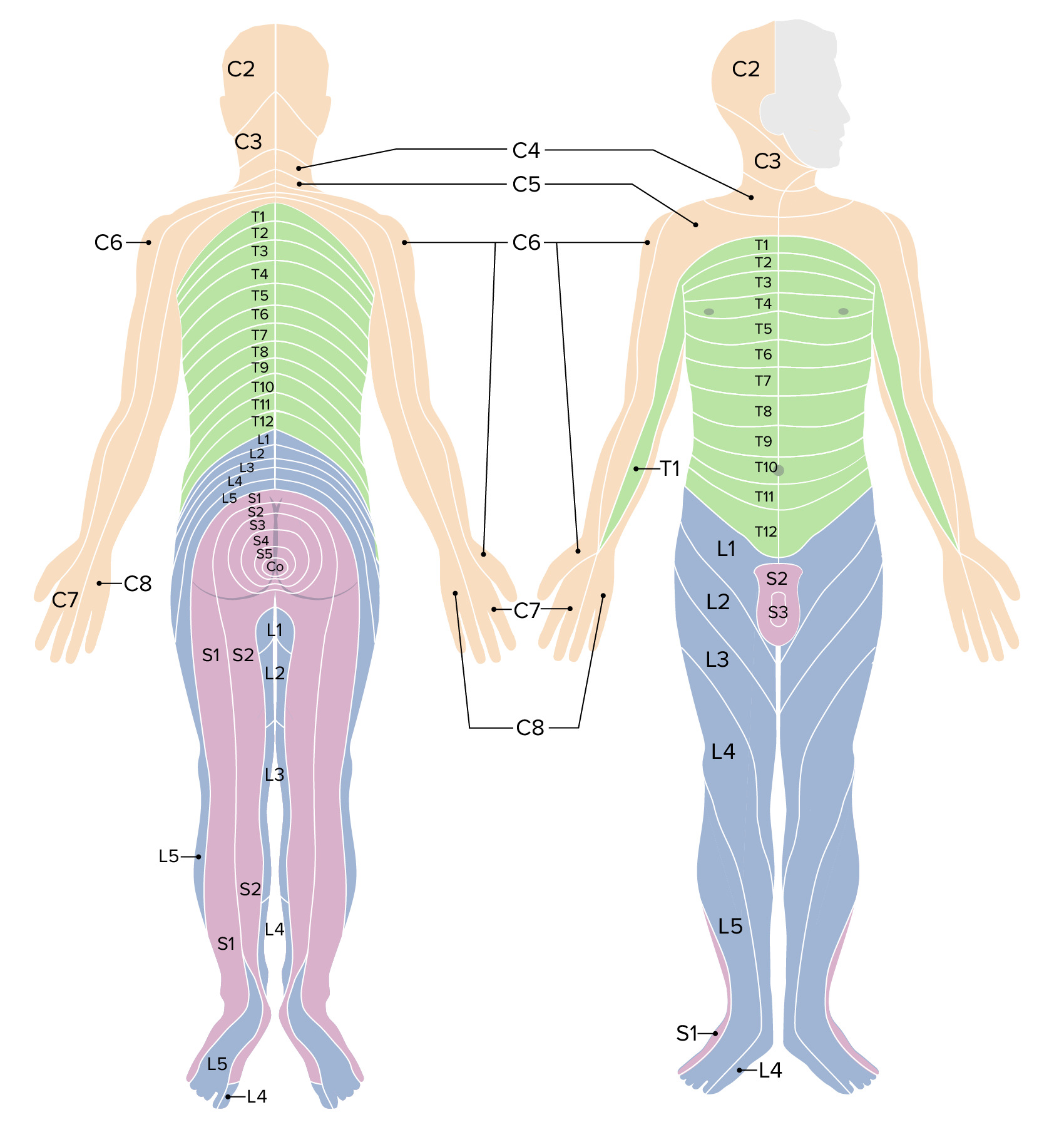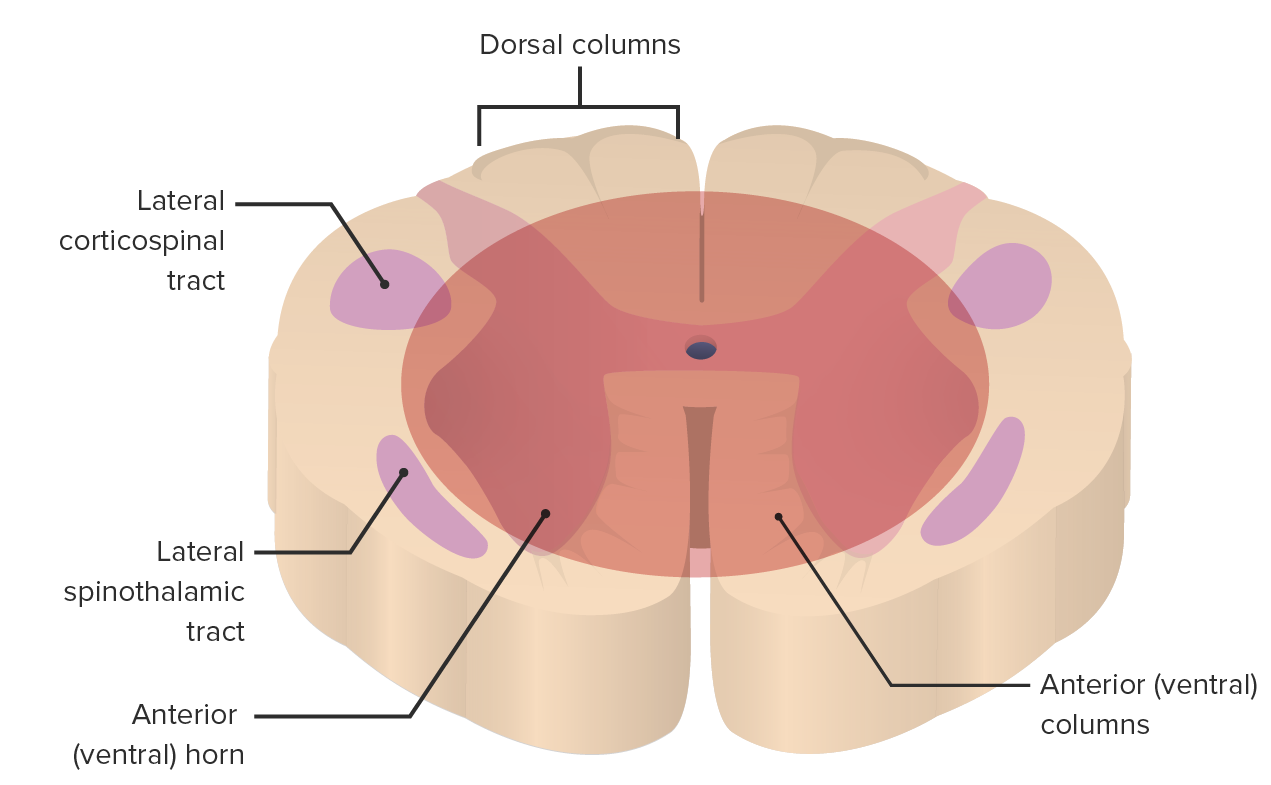Playlist
Show Playlist
Hide Playlist
Lesions and Diseases of the Spinal Cord: Syringomyelia
-
Slides 5 SpinalCord3 BrainAndNervousSystem.pdf
-
Reference List Anatomy.pdf
-
Download Lecture Overview
00:00 Another area of the spinal cord that can be involved in creating a pathology is the area of the central canal. 00:12 This disease state is termed syringomyelia. This is characterized by an expansion of the central canal in through this area. That is due to cyst or cavity formation. As the central canal enlarges, expands, it will start to expand into this area here. This is a connection between the spinothalamic fibers on the left and right sides. 00:43 This is termed our anterior white commissure. Further expansion will start to damage the lower motor neurons that are in the ventral gray horns that we see here. There can also be intermediate gray horn involvement if you’re at the levels of T1 through T4 of the spinal cord. If that is so, the patient will have Horner’s syndrome. 01:17 Dorsal columns may also be involved in this particular disorder. Loss of function associated with syringomyelia would be bilateral loss of pain and temperature due to spinothalamic tract involvement; flaccid paralysis due to involvement of the lower motor neurons; muscle atrophy also due to lower motor neuron involvement; and then again Horner’s syndrome if levels T1 through T4 are involved.
About the Lecture
The lecture Lesions and Diseases of the Spinal Cord: Syringomyelia by Craig Canby, PhD is from the course Spinal Cord.
Included Quiz Questions
Which of the following sensations may be lost first in syringomyelia?
- Pain and temperature
- Proprioception
- Position
- Fine touch
- 2-point discrimination
Which structures are damaged first in syringomyelia?
- Crossing anterior white commissural fibers
- Ventral horn
- Spinal nerves
- Sensory horn
- Dorsal column
Customer reviews
5,0 of 5 stars
| 5 Stars |
|
5 |
| 4 Stars |
|
0 |
| 3 Stars |
|
0 |
| 2 Stars |
|
0 |
| 1 Star |
|
0 |





